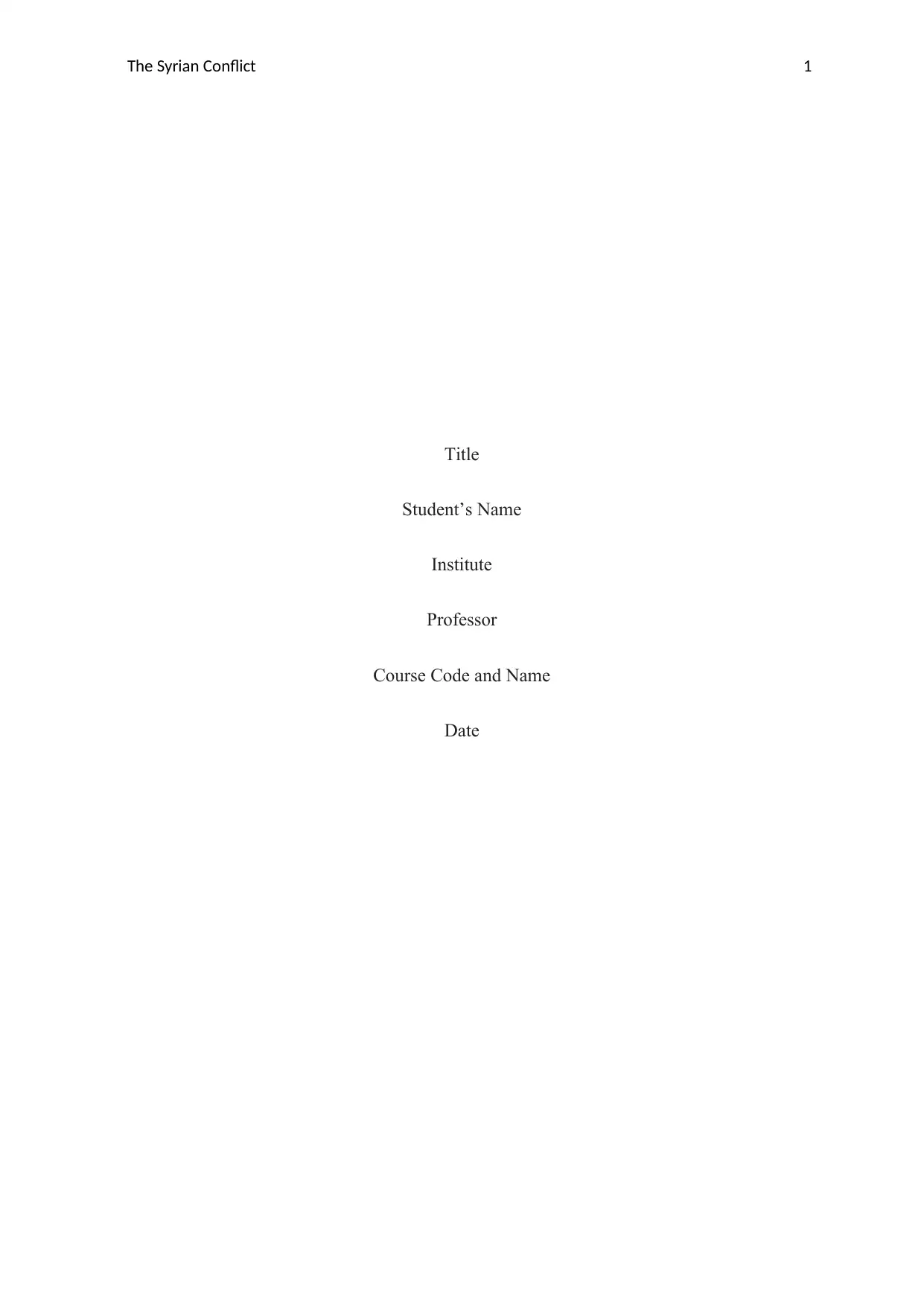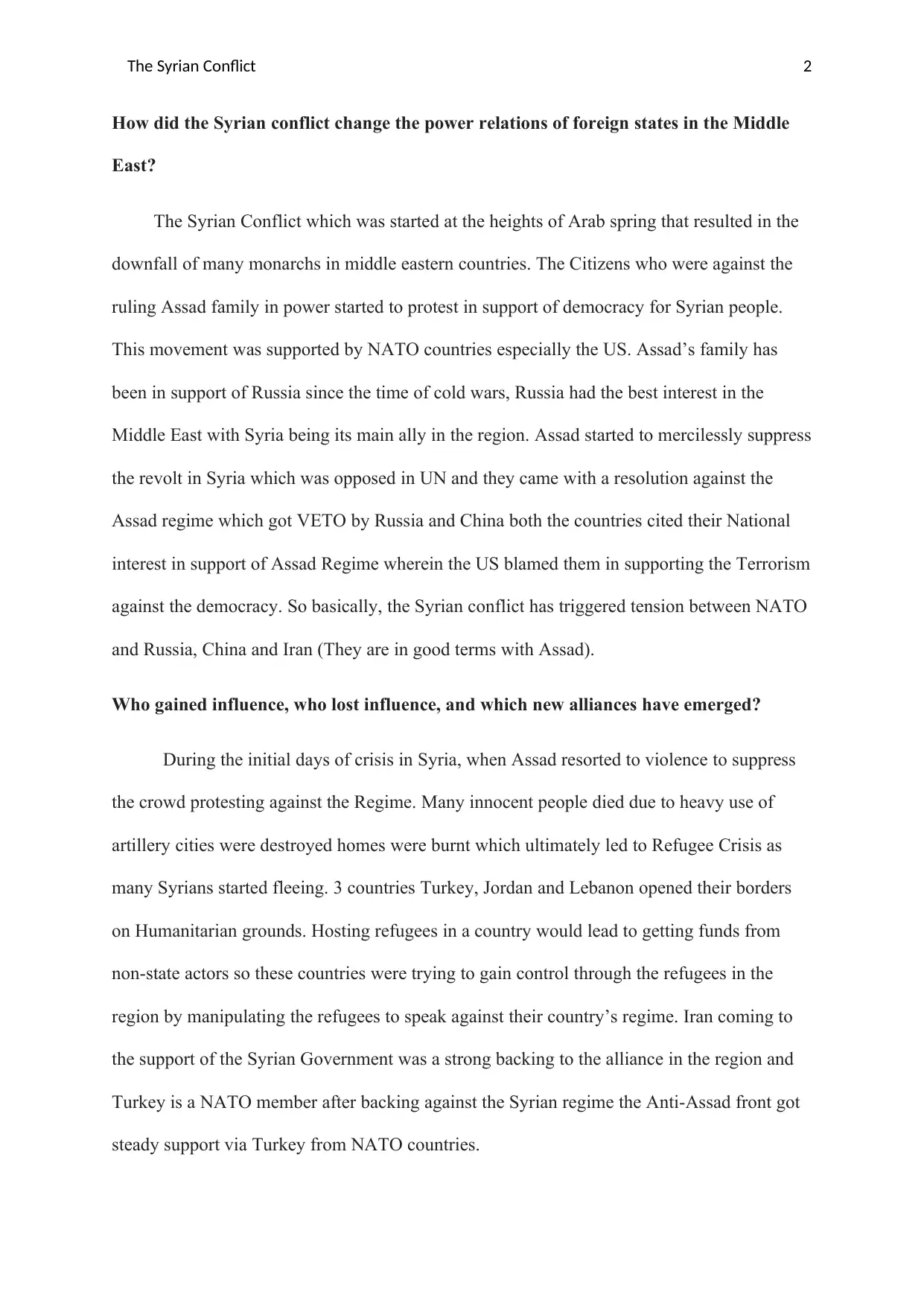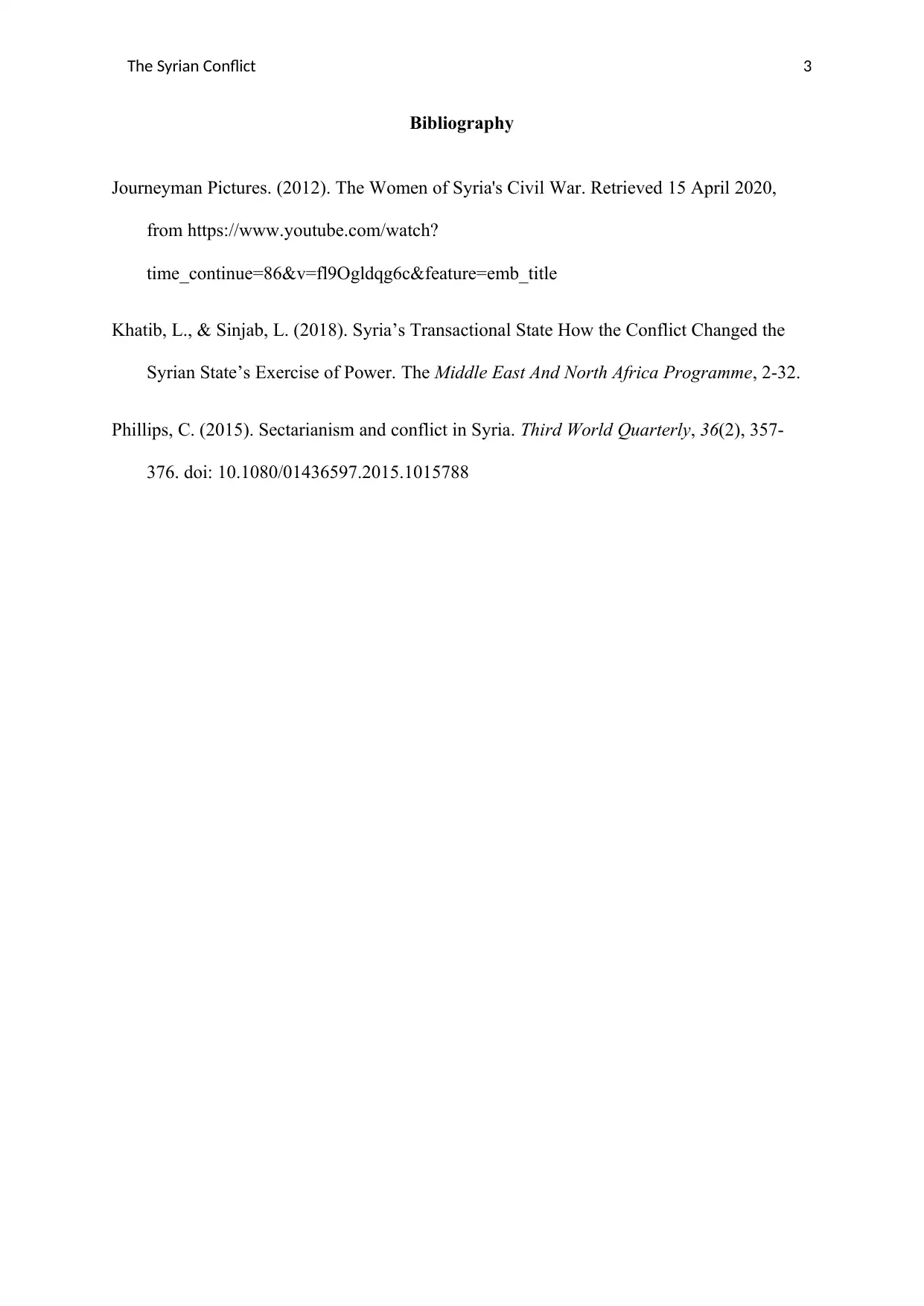Political Science Report: Syrian Conflict and Global Power Shifts
VerifiedAdded on 2022/09/25
|3
|469
|19
Report
AI Summary
This report delves into the Syrian conflict, examining its origins during the Arab Spring and the subsequent shift in power dynamics among foreign states in the Middle East. It explores the roles of key players like Russia, the US, China, Iran, and Turkey, and how their involvement has led to new alliances and conflicts. The report discusses the humanitarian crisis, including the refugee situation and the influence of non-state actors. It analyzes the 'semi-sectarian' nature of the conflict, challenging simplistic interpretations and emphasizing the interplay of class, ideology, and other factors. The report also examines the rise of a 'transactional state' and the impact of external actors on Syria's political landscape, drawing on the provided sources to offer a comprehensive understanding of the conflict's complexities and its implications for international relations. The report uses sources from Journeyman Pictures, Chatham House and Third World Quarterly.
1 out of 3









![[object Object]](/_next/static/media/star-bottom.7253800d.svg)